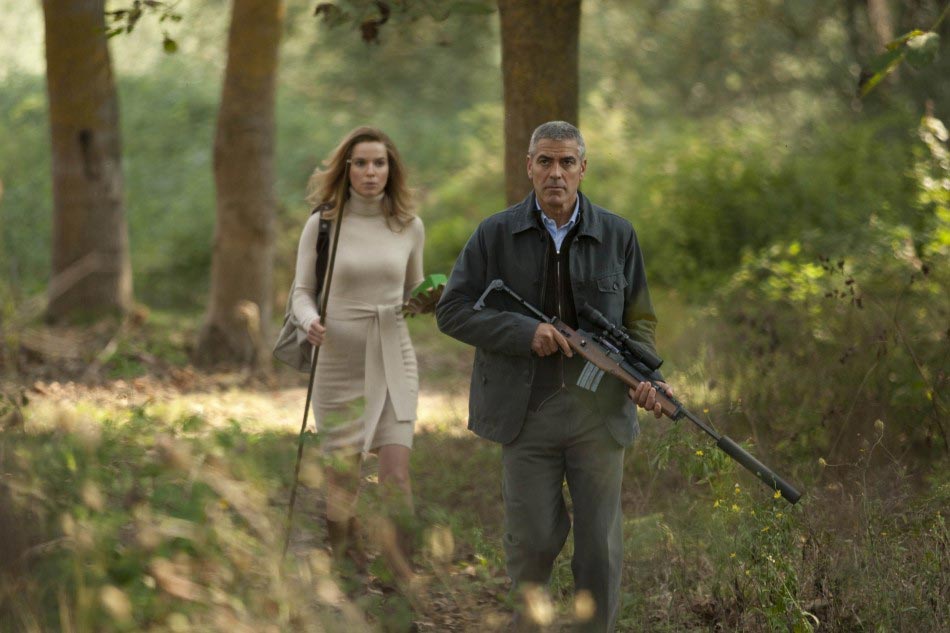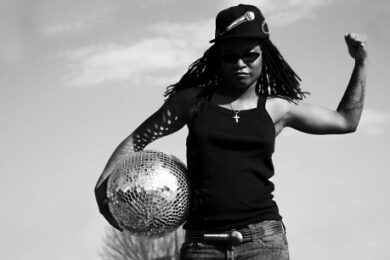Anton Corbijn is first and foremost a photographer. It is what he has done, brilliantly, for the last 30 years or so – and when one considers the variety and importance of his past subjects, the list becomes quite staggering. Early next year he will release a new book with Tom Waits; Corbijn describes their working relationship as that of "a great subject and very simple artist. When we work together there’s no record company, no stylist, no makeup. It’s just him and me in an old car, travelling around to find a location." For years he was responsible for Depeche Mode’s entire visual output. He still looks back on the work they did together fondly, despite the often intense working environment: "Sometimes it’s hard to get responses and get people to cooperate, at certain periods of their career, mainly the early 90s. But at the same time, they’ve been great for me because I just did my thing: the photography, the design, the stage design, and their music carried my imagery." He has even, on occasion, been afforded an audience with Irish egoist Bono and been allowed to make suggestions on how U2 should look in photos (although Corbijn admits he had far less control on these shoots).
It is perplexing, then, that his work in this field has such a small audience in Britain, his country of residence. Never has a gallery or museum curator picked up the phone and asked if he has a collection nearing completion, or what he is working on at the moment. Perhaps that will change after they see his latest film, The American, a slow-paced thriller with a glacial visual style that has nearly as much to do with the composition of the still image as it does the moving. Corbijn himself seemed a little taken aback (and pleasantly surprised) when I opened with this line of questioning after, one imagines, a day of answering questions about George Clooney’s torso. "It’s very strange, I was frustrated by it for a long time, but now I just find it curious," he muses. "Because for 30 years I have worked here, and I’ve got a great collection of photographs of that era – the 70s in Holland, the 80s, 90s and last 10 years here – but somehow people seem to think I am a rock photographer, and that immediately it is seen as a photography that is usable for some things but not an art in itself. But I’m really not a rock photographer."
Film Trailers by Filmtrailer.com
If not a rock photographer, then what? A suggestion that his work has more in common with great portrait photographers such as Irving Penn than the pages of the NME is met with a slightly guarded response: "Well, I think that is perhaps praise too high, but yes, I’m more a classical photographer. The main discrepancy is that in Europe I do have a lot of museums that show my work, and to a very successful outcome, very big and well visited shows. There doesn’t seem to be a commercial reason not to do it. I do think that making films gets seen as a form of mature expression, whereas photography doesn’t seem to be that in England. People reacted very well to my first film in England, and the interest in my photography is larger now in England than before."
Maybe it’s this lack of recognition that has pushed Corbijn into filmmaking. But one also senses that he is attracted by the opportunity to create something more fluid, more creative, and more distinctly his own. At one point in the film, a village priest tells Clooney’s character Jack: "You have the hands of a craftsman, not an artist." Perhaps to a certain extent Corbijn has felt this about his photography. When one predominantly uses musicians as subjects, the photographs (or music videos) become secondary to the music itself. Your work will always be drowned out by another’s soundtrack. You may be able to influence how people perceive the music to an extent, but you will never be able to influence the music itself. When creating a film, however, all of the content – musical or visual – is subsumed by the overall cinematic vision. In Corbijn’s case, it becomes the work of a single ‘auteur’: him.
The cinematic vision he has created with The American is subtle, nuanced and slow paced. It is an old-world assassin thriller, far more concerned with its characters, its surroundings and a brooding sense of existential menace than the reflex action of rifles. Despite its name, the film speaks to a European tradition of filmmaking, movies such as Henri-Georges Clouzot’s The Wages of Fear, and in particular Alan Delon’s impenetrable hitman in Jean-Pierre Melville’s Le Samourï. The actors, too, seem to be harking back to a more classical mode. Clooney often has the aura of the old Hollywood studio star, while Violante Placido, the film’s Italian starlet, evokes an image of Italy’s great leading ladies – even if she herself might not quite be there yet in terms of performance. "I love Monica Vitti," she enthuses. "She had this special voice and she had this kind of frailty and drama and irony. I love that mixture. Then of course there was Sophia Loren, Claudia Cardinale, Anna Magnani. We’ve had great actresses with great personalities and all very different."
Corbijn was also keen to stress the influence of another genre. "With this film I saw a possibility to have a suspense thriller and a western combined," he says. His background in photography seems the perfect training for such a film. The American is full of pensive shots, unobstructed by over the top camera movement and instead favouring the still frame. His compositions beautifully render the hazy, hilly Abruzzo region of Italy, with its meandering meadows and closed hilltop towns. Interestingly, this was also the backdrop for many of the ‘spaghetti’ westerns, one of which – Sergio Leone’s Once Upon A Time In The West – is referenced in the film.
Surely there is a significant similarity between composing a photograph and a still film frame? As behoves the director of such a thoughtful film, Corbijn takes a moment to ponder this connection between the two mediums, before answering. "I definitely pay a lot of attention to how everything is composed, but you have to be careful with film that it doesn’t just become only very well composed imagery," he says. "My approach is slightly more poetic, I think, with film than with photography." Again, you sense that Corbijn feels he has developed as an artist by becoming a director, and The American is certainly an accomplished effort, if not quite as arresting as his debut Control. But arguably what is most interesting in his switch in medium is the visible tension between photography and film still present in his work. His films, perhaps unsurprisingly, are noticeably informed by a photographic lexicon. And it should also be noted that he will publish a book of photography from the set of The American to accompany the film’s release. He just can’t seem to leave his stills camera at home.
Finally, we come to the character of Jack, who is himself using the profession of photographer as his cover story in Abruzzo. He is often looking through the long lens of a Leica, surveying his surroundings from afar; it is all too tempting to read a certain self-reflexivity on Corbijn’s part into these scenes. It is a notion the director ultimately rejects. "No, unfortunately I had to make him a photographer, as it was the best excuse for him to be there," he claims. "In the book, the English guy was a painter of butterflies, and a hitman from England who does that is believable, because in England there are a lot of eccentrics. But an American hitman painting butterflies would not be very believable, so I had to give him another excuse for being there. I thought the camera, with the long lense would give him an excuse to look at things, but you never actually see him taking a picture anyway. But, no, I didn’t want people to think it was anything to do with me. The fact that he is a loner, that he deliberately makes himself a loner, that has more to do with my interest in him."



